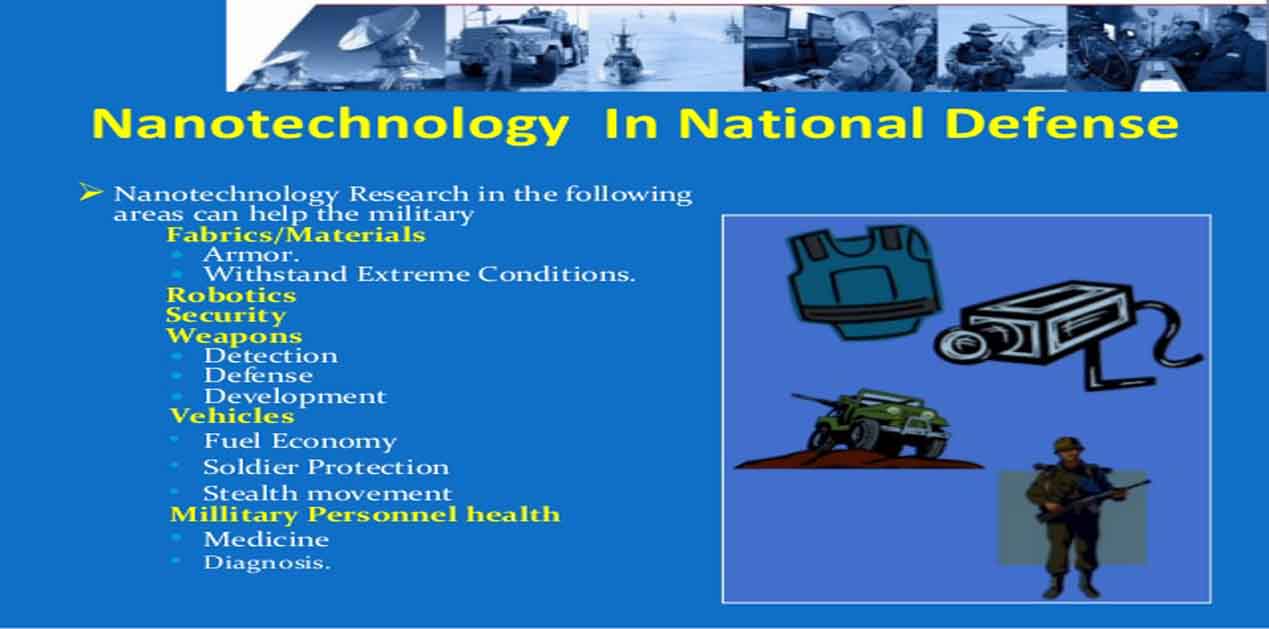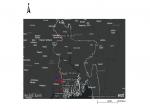General Aspects
Nano technology is science, technology and engineering conducted at nano scale of approximately 1 to 100 nanometre (nm).1 It is stated that physicist Richard Feynman is the father of this technology. It all started at a meeting of American Physical Society at the California Institute of Technology. Richard Feynman stated, “And it turns out that all the information that man has carefully accumulated in all the books in the world can be written in this form in a cube of material one two hundredth of an inch wide - which is the barest piece of dust that can be made out by the human eye. So there is plenty of room at the bottom”. That was said in 1959 about 61 years ago.2
Nano technology has opened new frontiers to mankind. Precision in science and engineering with smaller particles is the core area of this unique technology. Though science has spoken of atoms and molecules for many years, much remains to be analysed about their behaviour at the nano level. A nanometer is one billionth of a meter; few illustrations of its size are as appended below:-
- There are 25,400,000 nanometers to an inch.
- A sheet of newspaper is about 100,000 nanometers thick.
- On a comparative scale, if a marble were a nanometer, then one meter would be the size of the Earth.
Development
Nano structures can be nano scale in one dimension as in the case of thin films and sheets. In a two dimension mode it would be like carbon nano tubes. It is also possible to have items in three dimensions which are nano scale as in the case of nano particles. These are nano porous structures where the cavities are nano sized, while the bulk material remains macro sized. Illustrations are nano sponges and nanoporous membranes.
It is pertinent to note that nano technology entails more than just scaling down the behaviour of micro and macro levels of matter. The basic building blocks of matter and life occur at the nano level. Molecular chemistry, genetic reproduction, cellular processes and the frontiers of electronics are all based at the nano level. The capability to understand how these processes work and being able to manipulate events at this level in order to get specific outcomes opens up the possibility of significant new advances in a wide variety of fields. This would comprise medicine, electronics and materials technology.
The small size of nano structure can significantly alter the properties of matter of a bigger form. In nano substances the surface area gets enlarged, accordingly surface properties may dominate and make them more reactive. Quantum physics becomes extremely important at the nano level and therefore properties of material, individual atoms as also bulk matters - can differ considerably to exhibit characteristics that are not evident at larger scales. To illustrate, gold nano particles can appear in different colours orange, purple, red or green.3 Similarly carbon atoms in the form of a carbon nano tube can demonstrate tensile strengths 100 times that of steel and can be either metallic or semi-conducting depending on their configuration. For example, in sun screen, titanium dioxide and zinc oxide are common ingredients. Both particles appear white when made of macro particles, but when ground to the nano scale these appear translucent.
Nano-technology can visualise new tools, products and technologies to solve current global problems. Nano properties have tremendous effect on military platforms, equipment, weapons and missiles where material is extremely important and where these would be extremely useful in reducing the weight of military hardware. Its military applications are numerous and it can resolve many restrictions by reducing their weight and volume. That could enhance our ability to fight, particularly in mountains and high altitude areas by moving quantities of equipment in response to situations.
Nano-technology certainly allows the world to overcome numerous challenges. There are a variety of products which could be created which would make life easier. To illustrate, water filters could be created which do not need electricity, solar cells can be printed on sheets of paper and drugs could be made of smaller sizes to improve delivery. Applications of nano-technology to reduction of weight and volume would have vast applications in civil and military fields.
Major Countries dealing with Nano Technology
The global nano-technology market is expected to exceed $ 125 billion mark by 2024. Nano-technology continues to have a broad and fundamental impact on nearly all sectors of the global economy. The aspects covered includes electronics, energy, biomedical, cosmetic, automotive, agriculture and defence. Here, it would be pertinent to examine the global nano- technology market and forecast first by ‘components’ and then by ‘applications’. The first aspect pertains to components:-
- Nano-materials nano-particles have the highest share of global nano-technology market.
- Nano-tools account for the second highest share. In that nano-lithography tools dominate.
- Nano-devices segment has smaller share of the global nano-technology market.
A forecast by global nano-technology applications by 2024 are as appended below:-
- The top three applications of nano-technology are electronics, energy and bio-medical. Together they account for over 70 percent share of the global nano-technology market.
- Next comes the energy application, followed by the bio-medical application.
- Automotive which has dual use application captures 5 percent share of the global nano-technology market.
- The defence industry is gradually enhancing the usage of nano-technology. The trade has been valued at nearly $ 3 billion dollars in 2017. Being a field which has numerous defence applications, the usages are bound to increase in vast magnitudes.4
The United States, followed by the European Union, lead all countries in the field of research and development on nano-technology. Next are Japan and Russia, followed by China and South Korea. The United States launched the National Nanotechnology Initiative in 2000, establishing a multi-agency programme to coordinate and expand federal efforts to advance the state of nano scale science, engineering and technology. The aim was to ensure that the United States leads the world in nano-technology research, development, manufacture and in the field of defence production. The expenditure on National Nanotechnology Initiative has been $ 22.3 billion from 2001 to 2016 and thereafter around $ 1.4 billion in 2017. Similar amount was spent in 2018.
In 2019, the President’s Budget provides about $ 1.4 billion for continued investment in basic research, early stage applied research and technology transfer efforts that will lead to break through to the future. It is interesting to know the federal organisations with the largest investment. These are as listed below:-
- National Institute of Health.
- National Science Foundation.
- Department of Energy.
- Department of Defence.
- National Institute of Standards and Technology.
Another country which is of interest is China. In China, the inflection point was 1999. The Ministry of Science and Technology (MOST) initiated nationwide basic research in nano-material and nano-structure. Subsequently, nano-technology was included in the National High Technology Plan. These initiatives led the Government to fund 1000 nano related projects from 1990 to 2002. The investment in these projects was about $ 27 million.6 China has numerous publications on the subject and is only next to United States in terms of the number of patents. China also uses international networks for further learning by means of research and development outsourcing and multi-disciplinary research partnerships which further develop China’s absorption of this technology.
India and Nano-technology
As regards India, the potential was recognised during the 9th Five Year Plan. The 9th Five Year Plan covered the period from 1998 to 2002. It was for the first time that national facilities and core groups were set up to promote research in frontier areas of Science and Technology to include nano materials. In actuality, the thrust came with the launch of the Programme on Nano Materials, Sciences and Devices, by the Department of Science and Technology (DST). The National Nano-science and Nano-technology Initiative (NSTI) was launched in October, 2001 and the motive was to create research infrastructure and promote basic research in nano science and nano-technology. It focused on various issues relating to infrastructure development, application oriented programmes in nano material including drugs, gene targeting and DNA chips. Nano-technology was heralded for revolutionary technology with applications in almost every aspect of life. Gradually, mission oriented projects were initiated in this field.
It is interesting to note that the DST has launched bilateral joint research projects with more than 25 countries and multilateral regional projects with multi-lateral bodies such as the European Union, BRICS and other organisations. These international collaborative projects cover a range of nano-science and nano-technology basic and applied research in areas having diverse applications as enumerated below:-
- Healthcare/medicine/drug delivery.
- Sensors.
- Energy storage in batteries.
- Solar energy.
- Fuel cells.
- Other areas of use of nano materials such as thin films, carbon nano tubes and nano composites.
It is also important to know a few aspects of Department of Bio-technology (DBT) which is extremely active in the area of nano bio-technology research & development. The Department has been actively engaged in promoting inter-disciplinary research, fostering innovations and promoting development of translational research in various areas of nano bio-technologies including new therapeutics, diagnostics, for early diagnostics. This programme could be applied also in the field of Army Medical Research and Veterinary Research. The various aspects which they focused are as under:-
- Nano-technology for food/agriculture: weed utility nano-sensor for crop protection; pesticide delivery vehicles; smart packaging; sensors for detecting pathogens; and chemicals in food. Militarily, these sensors could be utilised for surveillance as also getting early warning of tunneling activity and inspection of ammunition and missiles.
- Nano-technology in other allied areas such as bi-engineering, water filtration and variety of other tasks. This could be also used for military applications.7
- Activity and inspection of ammunition and missiles for correct chemical composition.
It is interesting to note that Department of Electronics and Industry has also been taking a few baby steps and are doing extremely well in the manufacturing of semi-conductors and chips for Indian Space Research Organisation. All these could be used for the development of high speed communications.
Indian Army and Nano-Technology
General
As elucidated, Nano-technology has profound effects on defence related applications a fact realised by numerous countries. Nano-technology has the potential to influence warfare technology in number of ways. Lighter, stronger, heat resistant nano material could be used in manufacturing all types of war-like equipment, weapon platforms, and missiles enabling mobility over all types of terrain including mountains. With regard to boots on the ground, the military use of nano-technology will ensure better protection, more lethality, enhanced endurance and better capabilities of repair in the battle space.8
Areas Impacted
The first aspect that nano-technology would directly impact would be the all class of vehicles. The aim would be to reduce the overall weight, improve its fuel efficiency and improve the ergonomics. This would be applicable to tanks, infantry combat vehicles, gun towers, engineer vehicles and load carriers. Nano-technology makes the vehicle stronger in the event of a crash.9 Overall, nano-technology can concentrate for five areas for the Indian Army. These are as under:-
- Focus on the combat soldier,
- Ability to introduce nano technology in information dominance,
- Weapons,
- As discussed above, vehicles and platforms,
- Logistics.
The combat soldier is keen that the weight of his equipment is reduced. Further, the sensors he carries would need lesser electrical output for the same functional capability. The soldier of the future of the Indian Army should have light protective clothing, Battlefield Management System in the form of a wrist watch which would provide him all details including the Common Operating Picture. Further, his weapon would be lighter and he would be camouflaged against Infra-Red (IR) devices. The future soldier will have an all impact suit enabled by nano-materials combined with micro or macro fibre to offer protection against bullets, grenade fragments, bio agents, chemical agents. His back pack and weapon would be light with precise ammunition. His smart helmet is light weight and he will have a light solar system for preservation of food and water.
In the field of Information Dominance, nano-electronics will basically lead to improved equipment and quality for sensors and other communication equipment. In the field of electronics it will lead to lower power consumption with regards to microchips. It would also lead to less noise and higher processing speeds. In times to come, equipment with nano-electronics will take on cognitive functions leading to higher human applications by machines. Gradually these will increase leading to better command functions being performed by machines. The Indian Army, which has a wide surveillance network, will be deeply impacted by these changes.
Nano-materials will assist in creating a smoother control of energy release and shorter diffusion paths for ammunition blasts of High Explosive. This will improve the overall impact at the target end. Further, nano-particles on ammunition can create greater penetration of kinetic shells particularly against armour. The construction flexibility can be improved so that light falling on these particles is scattered, thereby improving the stealth capability of the material. The impact of Nano-technology would in the next decade result in light weight structures for guns, rifles and automatic firing systems. Other armies are using nano-weapons for correcting the bullet path against body vibration while firing.
Future platforms, be it a tank or a land vehicle, should be lighter to fit in greater numbers into an IL 76, C 130 or a Globe Master transport aircrafts. The tank should be faster and more lethal. The overall aim would be to develop light weight nano-composite plates to cover critical parts of the tank, infantry combat vehicle or any other vehicle. In addition, electronic systems and other components would be light weight while nano-particles would scatter light and Infra-Red, thus providing with stealth capability. Unmanned vehicles based on nano-materials would similarly be able to produce better results in the battle space.
An essential element of future warfare is logistics. In the Indian Army, supply chain management forms an important component of logistics. This would help operations in the field to ensure that food, water, ammunition and fuel supply are simpler to move to the right place, on time and in desired quantities. In order to undertake such tasks, there is the need for modular containers. These could be of various sizes which can be moved to the desired destinations for the troops. All these containers would have RFID tags which would assist in collection, transit and distribution. Nano-technology would make these containers light and easy to move by transport aircraft and utility helicopters. All these aspects, combined with Artificial Intelligence, would make easy the delivery of items in the battle space.10
Way Ahead
The Indian Army Technology Board needs to have comprehensive discussions with the DRDO on application of nano-technology with regard to its equipment inventory. In a one-day workshop held in 2012, the DRDO informed that there were more than 30 laboratories working on nano-technology.11 Thereafter not much has happened. To expedite issues it would be best to involve the Indian Army and the DRDO with Indian Institute of Science Bangalore which is a premier institution dealing with the subject. The partnerships must lead to a key projects being undertaken on combat battle gear, sensors, platforms and containers. Active participation of the triad would lead to optimal development of products.
References
- “What is nano technology? www.nano.gov, accessed on April 7, 2019.
- Dr Bhaskar Bqlakrishnan, “Technology and International Relations: Challenges for the 21st Century”, Indian Council of World Affairs (ICWA), Vij Books India Private Limited, Delhi, India, 2017, p.169.
- Mark Ratner, Daniel Ratner,” Nanotechnology, A Gentle Introduction to the Next Big Idea”, Chapter 2, www.materialrulz.weebly.com, accessed on April 14, 2019..
- Research and Markets,” Global Nano Technology Market 2018-2024”, www.prnewswire.com, May 02, 2018, Accessed on May 03 2019.
- “NNI Budget”, www.nano.gov, accessed on May 4, 2019.
- Kiki Ahmadi,” Nanotechnology in China”, www.linkedin.com, Accessed on May 4, 2019.
- Amit Kumar, “Nanotechnology Development in India an Overview”, Research and Information System for Developing Countries, RIS-DP # 193, December 2014, www.ris.org.in, Accessed on 08 June 2019.
- Frank Simonis and Steven Schilthuizen, “Nano Technology: Innovation, Opportunities for Tomorrow’s Defence”, TNO SCIENCE and Industry, 2006, at http:// www.futuretechnologycenter.eu/downloads/nanobook.pdf . Accessed on June 09, 2019.
- Sanjiv Tomar, “ The Emerging Field For Future Applications”, Institute for Defence Studies and Analyses, New Delhi, 2015, www.idsa.in.Accessed on 09 June 9, 2019.
- Frank Simmons and Steven Schithuizen, “Nanotechnology, Innovation Opportunities for Tomorrow’s Defence”, at www.futuretechnologycenter.eu, Accessed on June 21, 2019.
- “DRDO Newsletter”, Volume 32, No: 11, November 2012 available at www.drdo.gov.in. Accessed on June 21, 2019.
(The paper is the author’s individual scholastic articulation. The author certifies that the article/paper is original in content, unpublished and it has not been submitted for publication/web upload elsewhere, and that the facts and figures quoted are duly referenced, as needed, and are believed to be correct). (The paper does not necessarily represent the organisational stance... More >>
Image Source: https://image.slidesharecdn.com/defenceapplications-130119015551-phpapp02/95/nanotechnology-in-defence-applications-4-638.jpg?cb=1358560598=











Post new comment